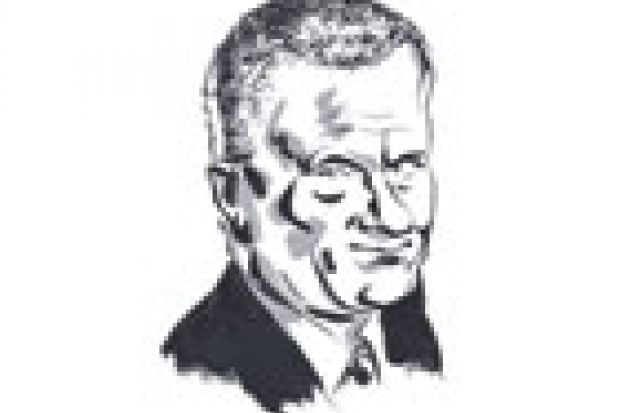Paul Keating, Australia’s prime minister back in the 1990s, once described Asia as the place you flew over to get to Europe. Europe, the place of true culture; Asia, well, the place you flew over to get there. Now Keating does most of his business in Asia. And Australia has an “Australia in the Asian Century” policy. No guessing why a former Treasury chief, Ken Henry, is now its champion.
Of course, Australia is really part of Asia, just as Britain is part of Europe. But both still stand apart from their larger continental neighbours despite growing confluence of trade, services and cultures.
Eighty per cent of Australia’s international students now come from Asia. China, India, Korea, Vietnam and Malaysia are the top five. Asia’s strong growth prospects for the coming decade led the British Council, in The Shape of Things to Come, its excellent report on emerging opportunities in international education, to forecast Australia as the stand-out winner in terms of new inbound students up to 2020, with the UK second, the US third and Canada fourth. Others - Germany, France and Japan - languish much further down the growth tables.
The exchange rates that were so favourable to international student flows to Australia in the early 2000s are now a factor in falling numbers, and the situation might be radically different yet again by 2020
One thing you know about these forecasts, however, is that they are rarely right. Immigration issues on the front pages of Australian newspapers, just as in the UK, US or Singapore, can easily alienate old customers. Currency relativities have their dire effects, too. The exchange rates that were so favourable for international student flows to Australia in the early 2000s are now a factor in falling numbers, and the situation might be radically different yet again by 2020.
After such rampant growth to 2009 in international education, Australia has clearly taken the past three years to reassess and reprioritise. Already with the highest percentage of international tertiary students in the world, at 22 per cent, it has turned to rethink key aspects of the business. What is the desired student and community experience? How does study best connect with work and professions? And what blends of learning types will those born in the 21st century demand at home or abroad?
Australia - Educating Globally, released on 26 February, is a blueprint for driving a further 30 per cent increase in international students by 2020. Known as the Chaney report, it is superficially like many other reports of recent years. Quality, student experience and new forms of marketing are there, as ever.
But then you see the differences. While The Shape of Things to Come is like a trusty companion to guide autonomous UK institutions towards better-informed decision-making, Australia - Educating Globally is an exhortation to national action.
Its first priority, in fact, is national coordination: between educational institutions, governments, business and industry. But it is to be achieved by the clarity of linked-up purpose between policies, programmes, pathways and partners, across public as well as private institutions.
The pathways approach requires tight coordination. Sixty per cent of international higher education students in Australia have studied on a “pathway”. That is, they had come to Australia originally to study English language (30 per cent), vocational education or training (14 per cent), non-award programmes (11 per cent) or attend secondary school (5 per cent). Destroy those earlier paths and you destroy vital feeder lines into higher education.
Different foreign nationals come in on different paths. In 2012, for instance, there were around 94,000 Chinese students in Australian higher education, and nearly 16,000 on vocational programmes. But there were almost 13,000 Indians in higher education, yet 40,000 in vocational education. And 8,556 Brazilians were in Australian schools while only 755 were in higher education.
Yet, despite being so impressively tooled up, Australia will still struggle to reverse recent downturns. While international education is now Australia’s third-largest export (sometimes the fourth, depending on flickers in the price of gold), the global appetite for the biggest exports, iron ore and coal, keeps the currency at a historic high. That is, at a historically high cost for many inbound students.
There is also the danger that you might win the inbound war but lose the equally important outbound battle. Australia - Educating Globally has to gain a fail for effective promotion of a larger “import” business in international education. As in the UK, under 1 per cent of domestic students undertake part of their studies abroad, and this despite the relative cheapness of doing so.
What’s worse, these outbound students don’t opt for the Asian countries that provide 80 per cent of the inbound trade. Their first preference is the US, followed by New Zealand, then the UK, Germany and France. Yes, Australians are still flying over Asia to get to Europe, despite strong incentives for outbound students now in the form of AsiaBound grants and Asian Century Awards.
What’s good is that the Chaney report candidly acknowledges the tensions that can exist between the study and the settlement intentions of international students. Through the 2011 Knight review of student visas, the country has worked to reconcile the potential confusion over the “double genuineness test”: genuine as a student?; genuine as a temporary entrant? This new report recognises that it is possible for an applicant to be a genuine temporary entrant but not a genuine student, or vice versa. And that getting into a tangle in visa messaging can cause international students simply to look elsewhere.
Register to continue
Why register?
- Registration is free and only takes a moment
- Once registered, you can read 3 articles a month
- Sign up for our newsletter
Subscribe
Or subscribe for unlimited access to:
- Unlimited access to news, views, insights & reviews
- Digital editions
- Digital access to THE’s university and college rankings analysis
Already registered or a current subscriber? Login
